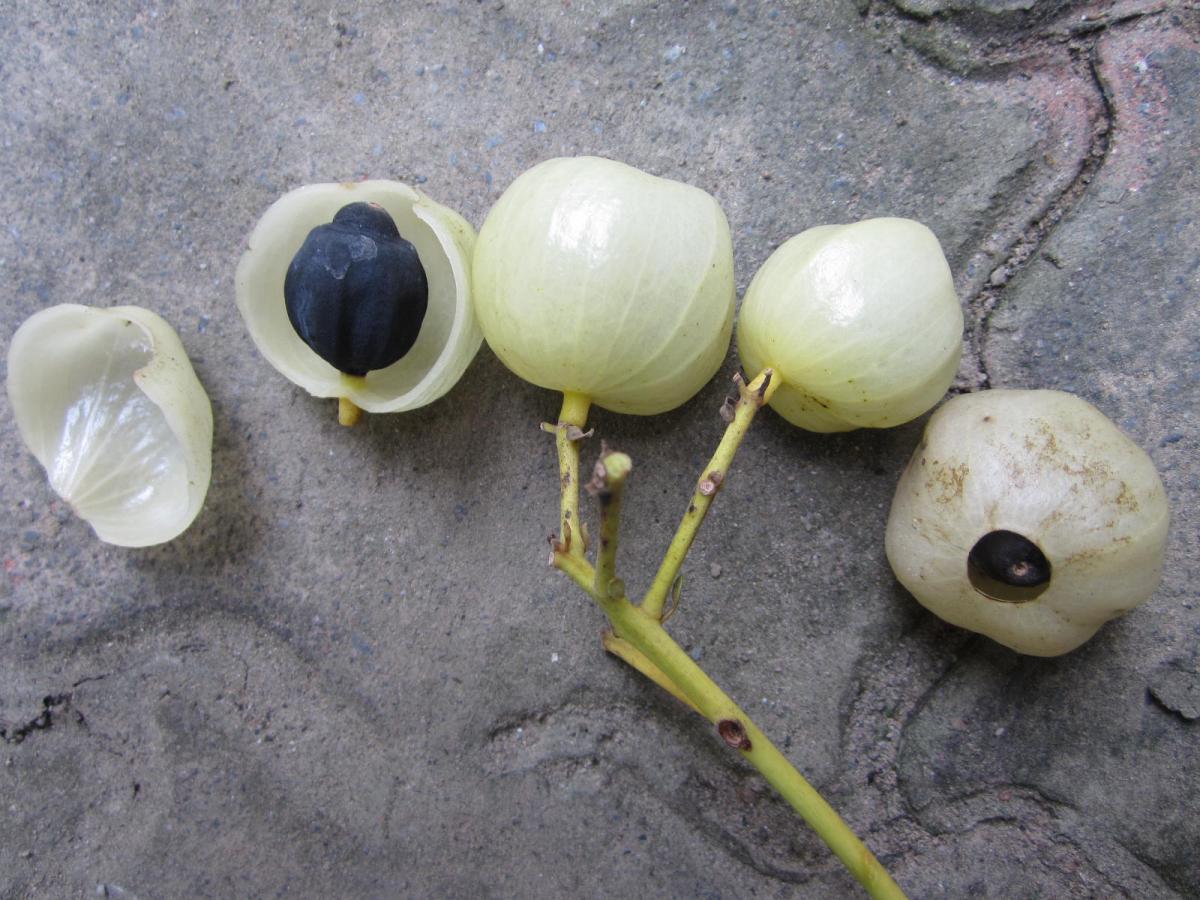蓮葉桐科
學名:Heritiera littoralis Dryand.
英名:Looking Glass Tree、Looking-Glass Mangrove
別名:大白葉仔、銀葉板根
蓮葉桐由於葉柄位於葉片底下,形狀像蓮葉,加上葉片寬大像梧桐,而有了蓮葉桐之名,葉脈基部有一塊紅斑是辨識的重點。它是典型的海漂植物,扁橢圓形果實木質化,外面被肉質杯狀苞片覆蓋,能協助果實漂浮海面上,隨潮流飄散至太平洋、印度洋等地的熱帶氣候濱海地區,包括中國南部、東南亞、印度、大洋洲及非洲東部海岸都有它的蹤跡。
Sea Cups’ petiole occurs under the leaf, shaped like a lotus leaf, and the broad leaf resembles a sycamore, hence the Chinese name. A red spot on the vein base is the distinctive feature. It is a typical sea-floating plant and produces flat oval fruits which are lignified and covered by fleshy cup-shaped bracts allowing the fruit to float on the sea surface and drift along the tide to the tropical climate coastal areas of the Pacific Ocean and the Indian Ocean, including southern China. It can also be found in Southeast Asia, India, Oceania and the eastern coast of Africa.
銀葉樹屬常綠喬木,臺灣原生,中國、東南亞各地、印度、大洋洲及非洲東部海岸均有分佈。成年樹的根基有明顯板根。互生革質長橢圓、倒卵狀長橢圓葉,背面密披銀白色鱗片(故名為銀葉樹)及散生褐色鱗片,葉幼嫩時紅色。萼鐘形4~5裂,內外密披毛,無花瓣。花期4~5月。果扁橢圓形,木質化有光澤,腹縫線上龍骨狀的突起,質輕可藉海水漂送傳播。果期6~10月。
An evergreen arboreal tree, native to Taiwan and distributed on the coasts of islands in Oceania. Bark smooth and taupe. Alternate heart-shaped or shield-shaped leaves (so it’s also known as lotus leaves in Chinese), margin entire. Monoecious, cymes arranged in a cone shape, blooming twice a year, in November to December and the next February to March. The black drupe oblate and covered with a cup-shaped fleshy hypocarp with a round opening at the tip to help the fruit float on the sea. Fruiting from December to January.
全日照溫暖環境,具抗風、耐鹽鹼、耐水浸的特性,既能生長於潮間帶,又能生長在陸地上。以種子繁殖為主,亦可扦插或高壓繁殖。
The plant normally grows in warm environments with full or partial sunlight, resistant to wind, tolerant to salt and drought. The soil needs to be well drained. Use seeds and cuttings for reproduction.
可作庭園景觀樹、行道樹、濱海防風樹種。木材堅硬,為建築、造船和製家具的良材。種子為收斂劑,治腹瀉;樹皮治血尿症。果實可做裝飾品。種子可榨油。
Commonly grown as garden ornament trees, coastal windbreak, etc. The seeds are poisonous but they contain oils which can be substitutes for soap and rubber. The sap can be used as depilatory. The roots can resolve fish or crab poisoning, and The seeds are laxatives. The wood is light and can be used to make wooden clogs, buoys or boats.




